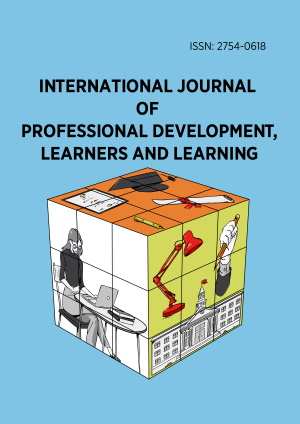Research Article
Learners’ Behavior in the Classrooms of Nepali Private Schools
More Detail
1 Faculty of Social Sciences and Education, Nepal Open University, NEPAL2 Budhanilkantha School, Kathmandu, NEPAL* Corresponding Author
International Journal of Professional Development, Learners and Learning, 4(2), July 2022, ep2210, https://doi.org/10.30935/ijpdll/12328
Published: 10 August 2022
OPEN ACCESS 2594 Views 2097 Downloads
ABSTRACT
Learners’ behavior in terms of ability and willingness are essential factors to improve their learning achievement. This study explores the learners’ behavior attributed by their teachers in terms of learners’ readiness level employing qualitative research through the workshop method among a purposive sample of fourteen teachers from five private schools of Kathmandu district to collect the information. The thematic analysis of the participants’ collaborative shared experience was used to analyze the attributed behavior of the learners under two themes: Learners’ ability-related behavior and willingness-related behavior. From the study, it was found that willingness is an important aspect in determining a learner’s behavior, but it also interacts with ability. The findings of the study suggest the teacher to keep a balance between personal and environmental factors to modify the learners’ undesired behaviors that eventually enhance the learners’ learning achievement.
CITATION (APA)
Khadka, J., & Poudel, N. (2022). Learners’ Behavior in the Classrooms of Nepali Private Schools. International Journal of Professional Development, Learners and Learning, 4(2), ep2210. https://doi.org/10.30935/ijpdll/12328
REFERENCES
- Ahmed, S., & Asraf, R. M. (2017). The workshop as a qualitative research approach: Lessons learnt from a “critical thinking through writing” workshop. The Turkish Online Journal of Design, Art and Communication, Special Edition, 1504-1510.
- Ardin, H. (2020). Factors causing students’ disruptive behavior in learning English: A case study. International Journal in Applied Linguistics of Parahikma, 2(1), 9-17.
- Aurora, S., & Flack, P. (2018). Principles of structural phenomenology: A basic outline and commentary. Acta Structuralica, Special Issue 1. https://doi.org/10.19079/actas.2018.s1.151
- Belle, L. J. (2017). Factors that influence student behavior in secondary schools. European Journal of Educational and Development Psychology, 5(5), 27-36.
- Chandra, R., & Azimmudin, S. (2013). Influence of intelligence and gender on academic achievement of secondary school students of Lucknow City. IOSR Journal of Humanities and Social Science, 17(5), 9-14. https://doi.org/10.9790/0837-1750914
- Denzin, N. K., & Lincoln, Y. S. (2018). The SAGE handbook of qualitative research. SAGE.
- Erdem, C., & Kocyigit, M. (2019). Student misbehaviors confronted by academics and their coping experience. Educational Policy Analysis and Strategic Research, 14(1), 98-115. https://doi.org/10.29329/epasr.2019.186.6
- Etaugh, C., & Harlow, H. (1975). Behaviors of male and female teachers as related to behaviors and attitudes of elementary school children. The Journal of Genetic Psychology, 127(2), 163-170. https://doi.org/10.1080/00221325.1975.10533946
- George, T., & Amalraj, A. (2016). Relationship between mental ability and academic achievement in mathematics of secondary school students. Research and Reflections on Education, 14(2), 1-9.
- Ghazi, S. R., Gulap, S., Tariq, M., & Abdul, K. (2013). Types and causes of students’ disruptive behavior in classroom at secondary level in Khyber Pakhtunkhwa, Pakistan. American Journal of Educational Research, 1(9), 350-354. https://doi.org/10.12691/education-1-9-1
- GON. (2019). Education Act, 1975, Amendment of 2019. Government of Nepal. https://moe.gov.np/article/1562/Act.html
- Gordon, B., Konopaske, R., & Matteson (Eds.) (2011). Organizational behavior and management. The McGraw-Hill Companies, Inc.
- Hersey, P., & Blanchard, K. (1977). The management of organization behavior. Prentice Hall.
- Horzum, M. B., & Cakir, O. (2012). Structural equation modeling in readiness, willingness and anxiety of secondary school students about the distance learning. Social and Behavioral Sciences, 47, 369-375. https://doi.org/10.1016/j.sbspro.2012.06.665
- Mattson, S. L. (2018). On-task behavior for students in a resource classroom setting: Effects of activity schedules on on-task behavior [Master’s thesis, Utah State University].
- Muharam, L.O., Ihjon, I., Hijrah, W.O., & Samiruddin, T. (2019). The effect of teaching style on students’ motivation and academic achievement: empirical evidence from public senior high school in Konawe Selatan Regency. International Journal of Scientific & Technology Research, 8, 1934-1938.
- Peters, S. J., & Gentry, M. (2012). Additional validity evidence and across-group equivalency of the HOPE teacher rating scale. Gifted Child Quarterly, 57(2), 85-100. https://doi.org/10.1177/0016986212469253
- Raza, S. A., & Sikandar (2018). Impact of leadership style of teacher on the performance of students: An application of Hersey and Blanchard situational model. Bulletin of Education and Research, 40(3), 73-84.
- Thorndike, E. L. (1931). Human learning. The Century CO. https://doi.org/10.1037/11243-000
- Veldman, D. J., & Worsham, M. (1983). Types of student classroom behavior. The Journal of Educational Research, 76(4), 204-209.
- Wood, T. D. (2017). Teacher perceptions of gender-based differences among elementary school teachers. International Electronic Journal of Elementary Education, 4(2), 317-345.
- Yusoff, A. S., Said, M. S., Hanapi, H., Nor, A. M., & Hashim, H. (2020). Quantifying factors affecting willingness to communicate in English: Understanding young learners at Perhentian Island. Journal of Education and e-Learning Research, 7(3), 334-341. https://doi.org/10.20448/journal.509.2020.73.334.341

 The articles published in this journal are licensed under the CC-BY Creative Commons Attribution International License.
The articles published in this journal are licensed under the CC-BY Creative Commons Attribution International License.